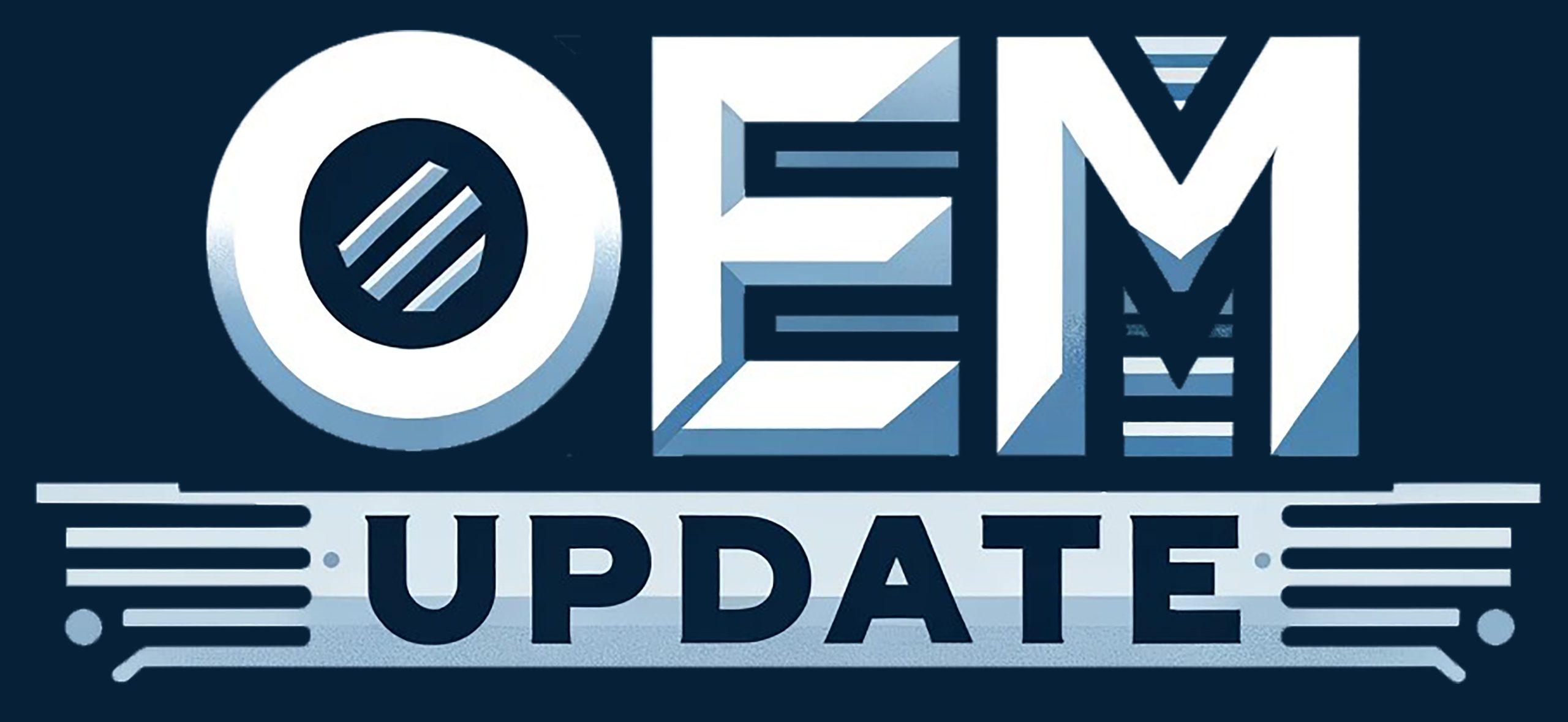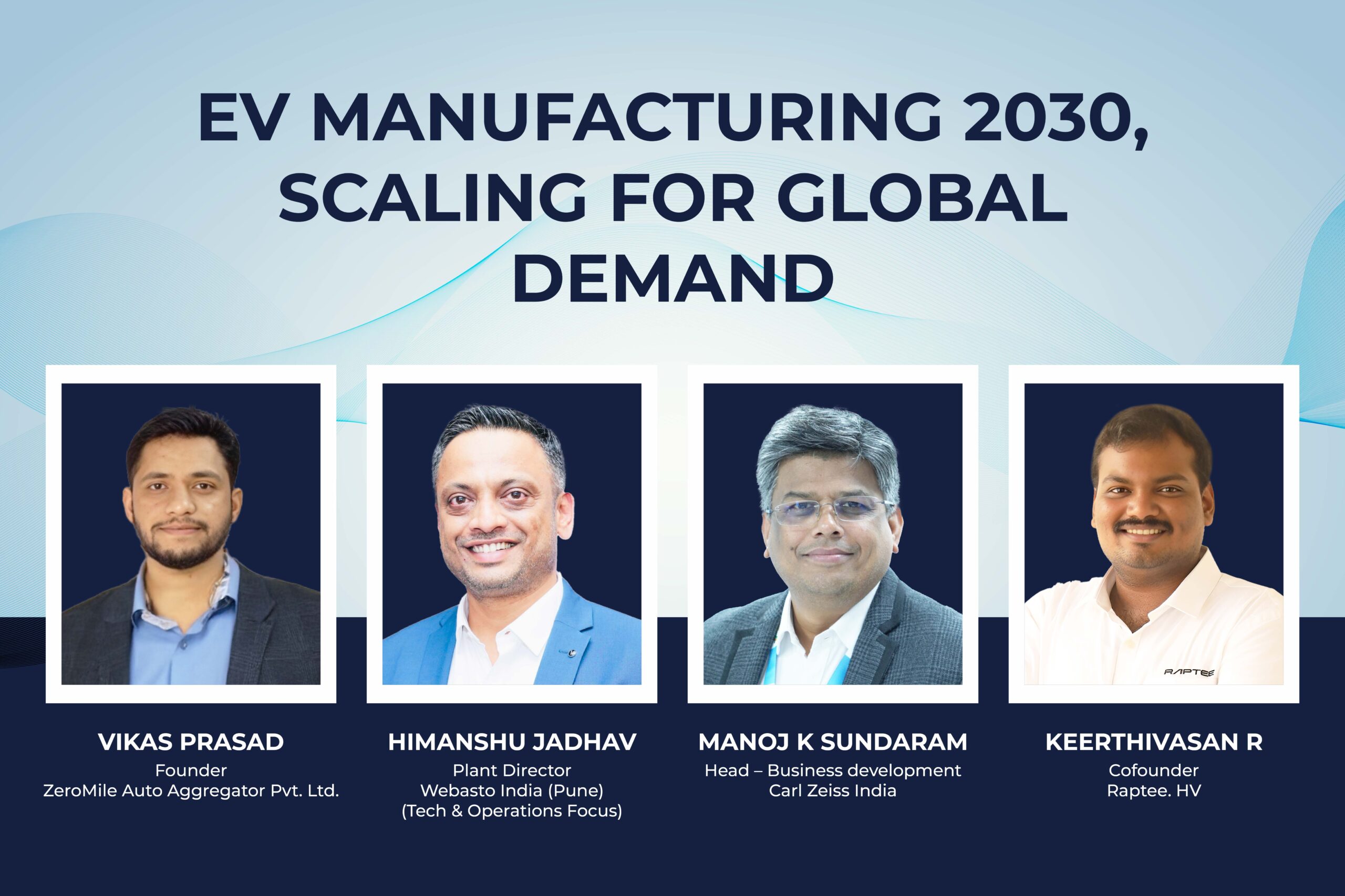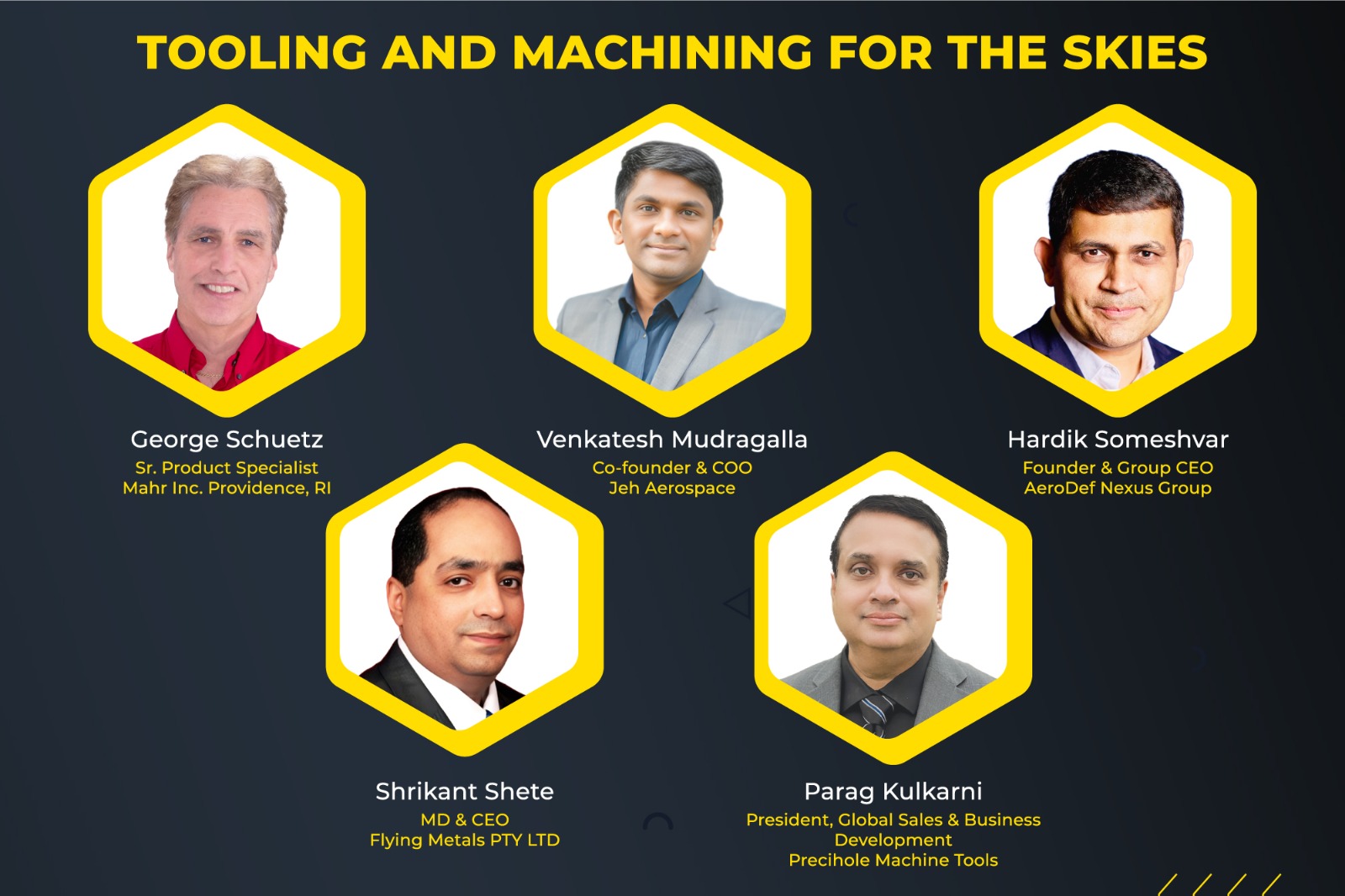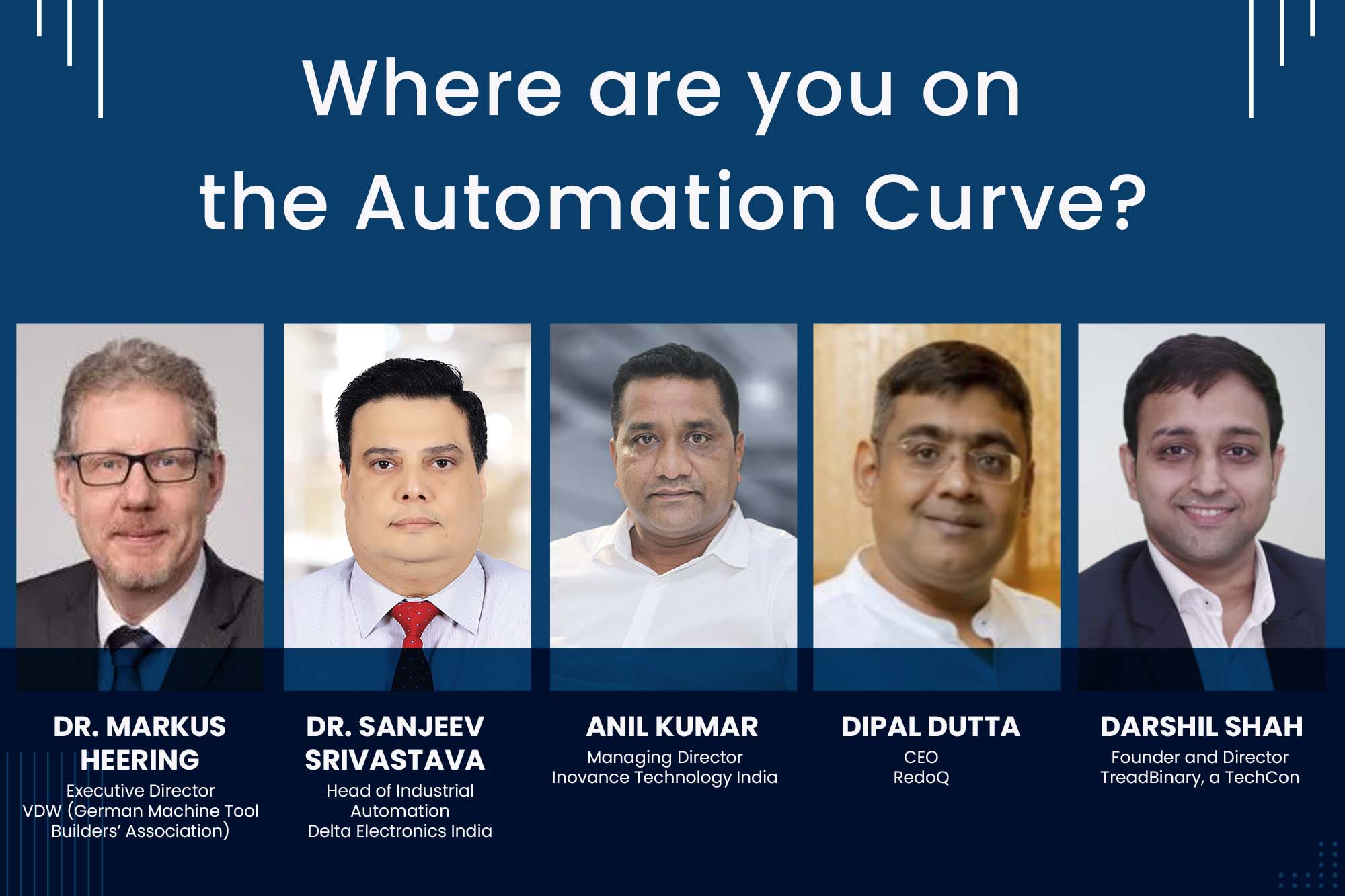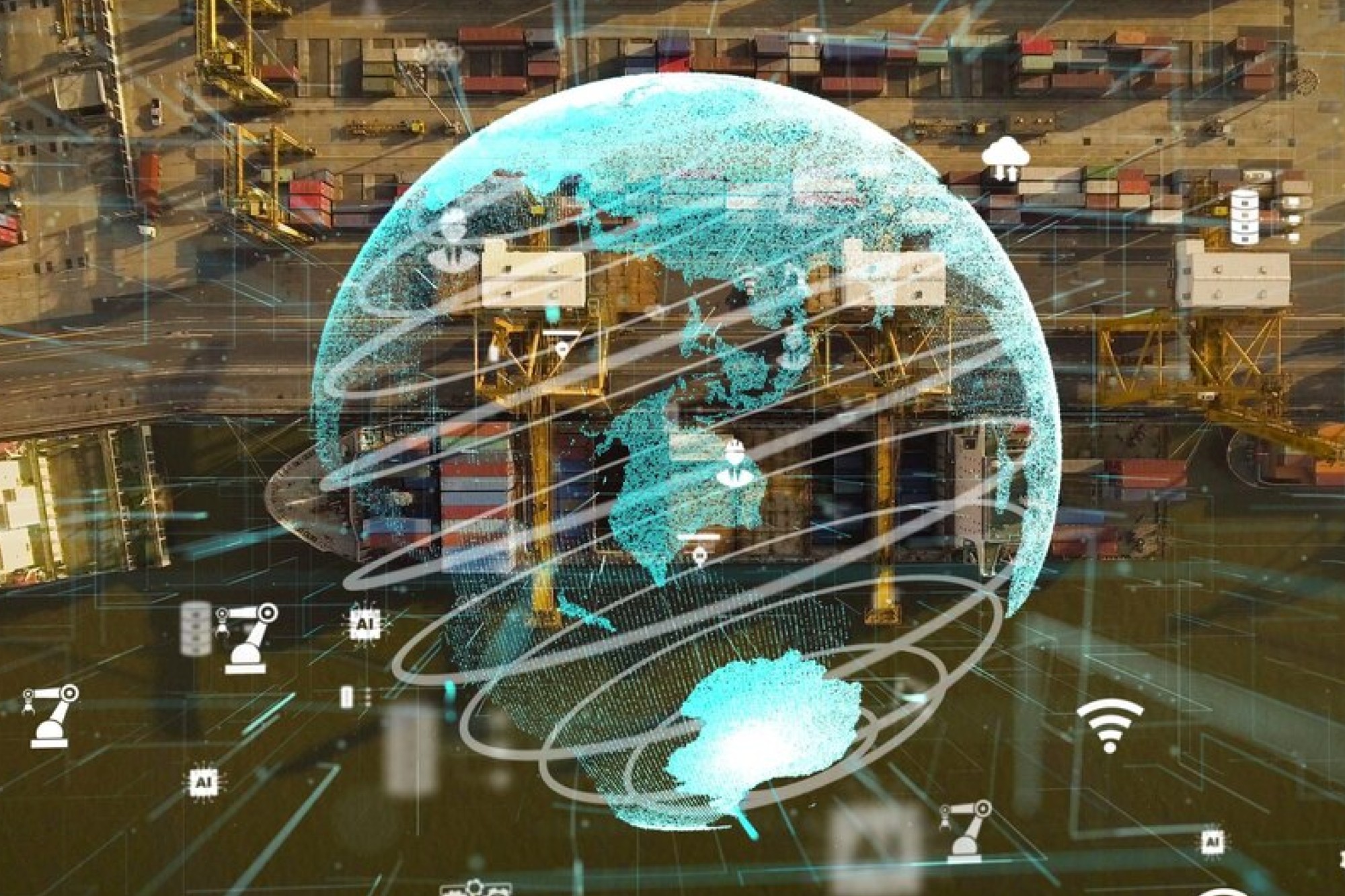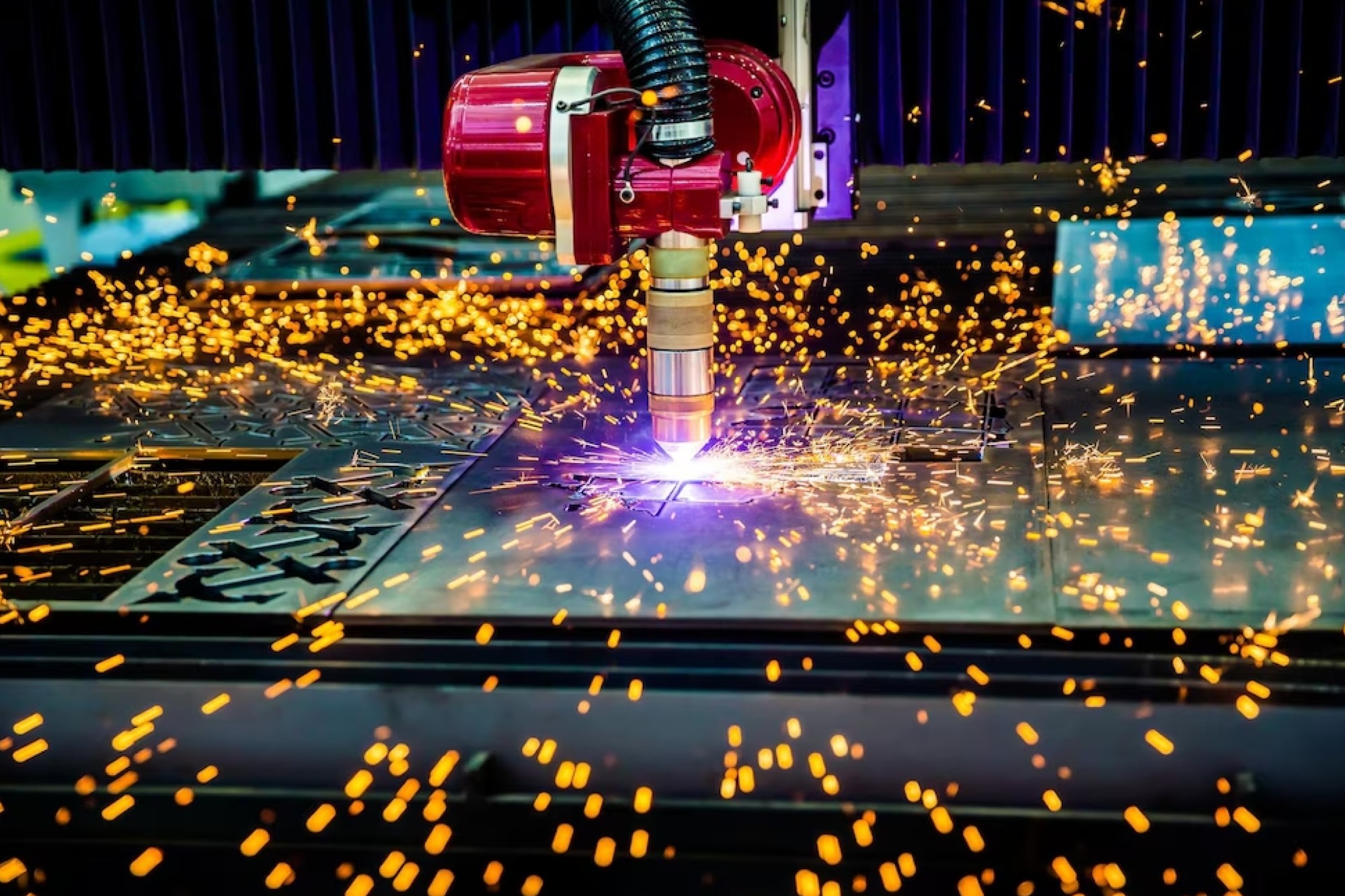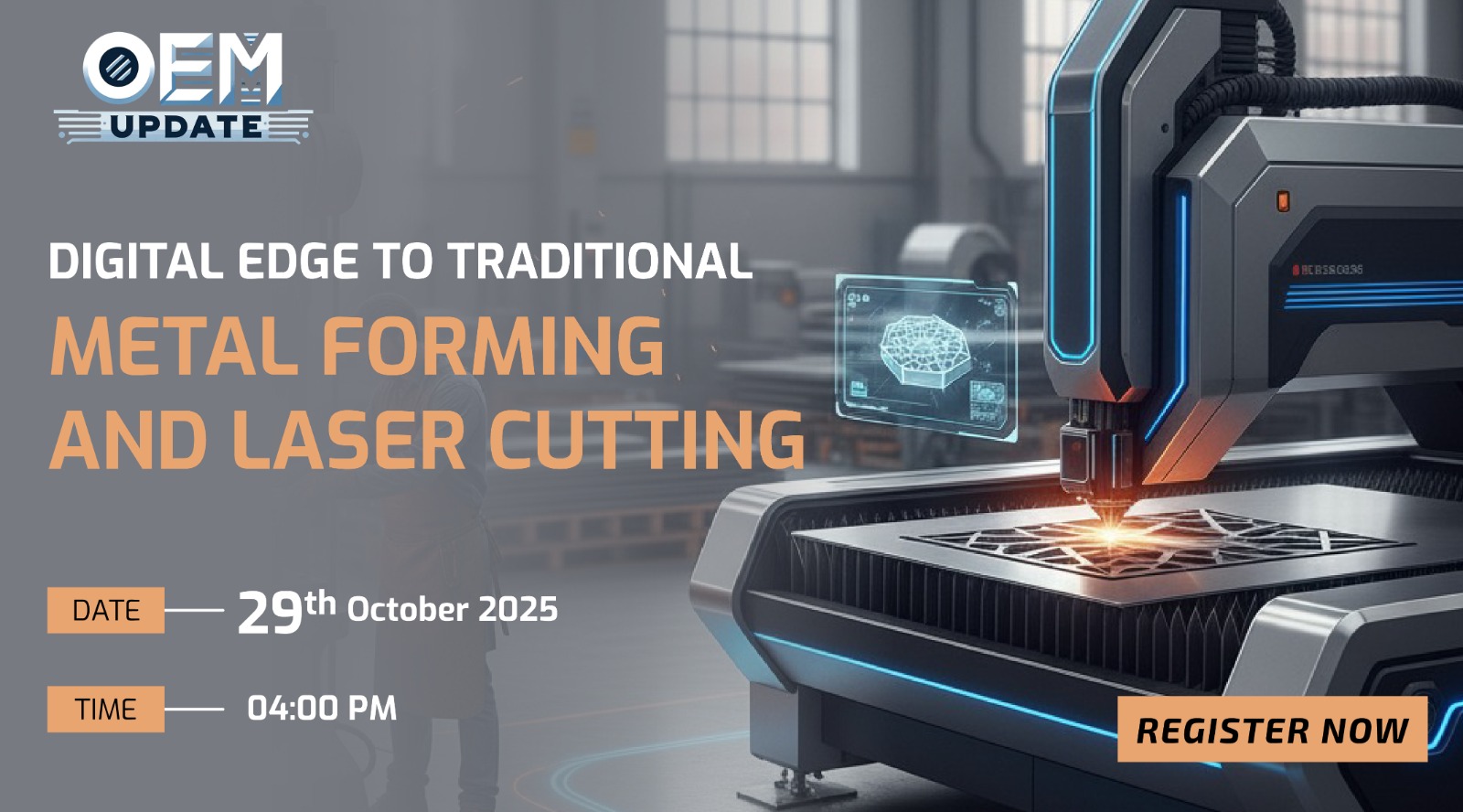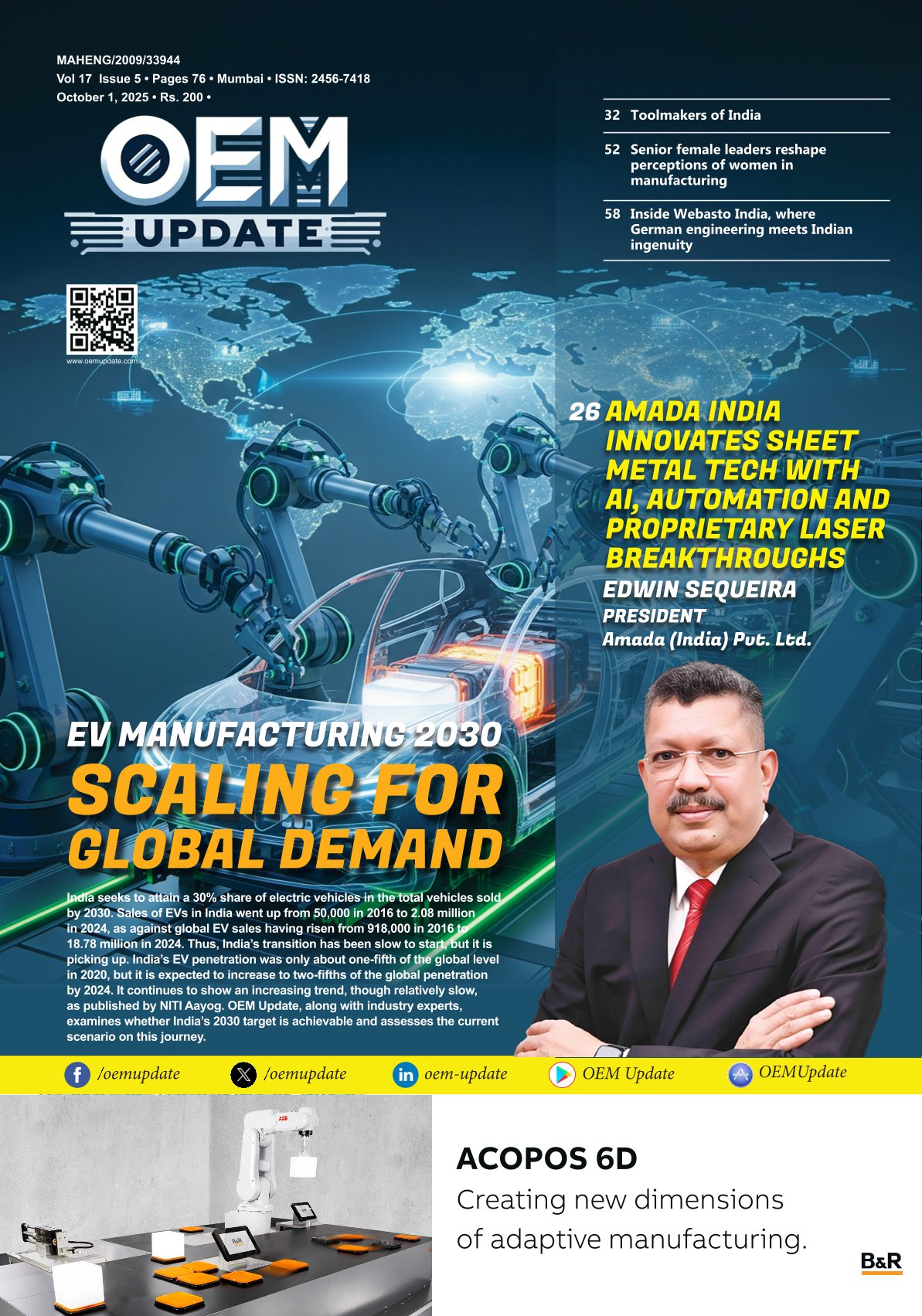EV Manufacturing 2030, Scaling for Global Demand
By Staff Report October 1, 2025 7:20 pm IST
India seeks to attain a 30% share of electric vehicles in the total vehicles sold by 2030. Sales of EVs in India went up from 50,000 in 2016 to 2.08 million in 2024, as against global EV sales having risen from 918,000 in 2016 to 18.78 million in 2024. Thus, India’s transition has been slow to start, but it is picking up. India’s EV penetration was only about one-fifth of the global level in 2020, but it is expected to increase to two-fifths of the global penetration by 2024. It continues to show an increasing trend, though relatively slow, as published by NITI Aayog. OEM Update, along with industry experts, examines whether India’s 2030 target is achievable and assesses the current scenario on this journey.
The contemplation towards the mobility sector has increased in the past few years with the advent of EVs, hybrid technology and many more underway. Governments, OEMs, and suppliers are eyeing a shift from internal combustion engines to clean, sustainable alternatives.
The government’s vision is to achieve 30% of all vehicle sales being electric by the year 2030. The race to 2030 has also intensified due to global OEMs working to achieve cost parity with ICE vehicles while scaling up manufacturing capacity to meet unprecedented demand. At the same time, supply chain disruptions, raw material constraints, and the need for localised gigafactories are pushing manufacturers to rethink strategies.
Achieving the ambitious target of 30% EV penetration by 2030 requires a historic adoption rate, given that it took approximately a decade to reach the current ∼7.6% sales share. The formula to bridge this gap hinges on inherent domestic development while mitigating external supply chain vulnerabilities.
Accelerating factors
- Captive domestic market: India’s domestic market is a guaranteed base for demand. This scale makes investment viable and stimulates the entire ecosystem.
- Competitive ecosystem and product innovation: India has a vivid environment where established automotive giants (like Tata, Mahindra) are competing directly and collaborating with agile EV startups (like Ola, Ather). This pressure demands product development, leading to products specifically suited for Indian conditions (e.g., lower cost, better thermal management, higher ground clearance).
- Investor confidence: The sustained flow of investment into EV startups and established players is a powerful indicator of expected high growth rates. Investor capital helps this scale up.
- Chicken and Egg dilemma: A lack of charging infrastructure is due to low EV adoption rate, and vice versa is an ongoing debate. But the proven practice has shown that the high adoption of two- and three-wheeler segments naturally drives the commercial necessity for charging points in residential complexes, restaurants, and public hubs, resolving the “chicken-and-egg” dilemma in localised zones.
Limiting factors
The primary threat to achieving the 2030 goal is the dependency on foreign supply chains, which introduces control and cost risks.
- Supply chain dependency: The single biggest bottleneck is the lack of indigenisation in lithium-ion cell manufacturing and the dependency on imports for critical raw materials (such as lithium, cobalt, and rare earth magnets). These materials and cells constitute a significant portion of the EV’s cost.
- Semiconductor vulnerability: Semiconductor chips and other electronic components present a significant challenge to supply chain stability for EV manufacturing, says Keerthivasan R, Cofounder, Raptee. HV. Continuous innovation results in the frequent release of newer, cheaper, and more feature-rich chips, leading to the rapid obsolescence of existing components.
Supply chains and the raw material conundrum
Manoj Sundaram, Head – Business Development at Carl Zeiss India, says significant progress has been made in localising the battery value chain. Where once only battery packs were imported, many OEMs, including major domestic players, now undertake complete in-house assembly and development, particularly for electric two- and three-wheelers, which show near-total domestic packaging.
However, achieving true self-reliance, critical for scaling EV manufacturing to meet global demand by 2030, is constrained by two factors: reliance on imported critical raw materials, such as lithium, cobalt, and nickel, and the limited scale of technically complex lithium-ion cell manufacturing.
A competitive EV manufacturing base requires greater government focus on backward integration, addressing upstream challenges of sourcing and processing critical battery materials. Long-term viability and return on investment depend on control over material inputs, essential for transforming India into a global EV powerhouse.
The domestic auto parts industry’s historical strength in conventional metal components is insufficient for the EV transition, as the two high-value areas — lithium-ion cells and power electronics — demand massive capital expenditure and specialised expertise in chemical processing and microelectronics, where India relies heavily on East Asian expertise. Meeting the 2030 EV goal requires multi-billion-dollar investments to solidify the high-tech supply chain, ensure global quality, and unlock export opportunities.
Semiconductor chip production has been a hot topic for India and our government. These chips, targeting consumer and automotive electronics, focus on mature process nodes, such as 28 nanometers, and could reduce import dependency within five years. However, what we are missing here is Advanced Chemistry Cells that yet remain heavily reliant on imported lithium and other critical minerals. Alternative battery chemistries, such as sodium-ion, and robust global raw material agreements, along with domestic processing, are necessary to address this issue.
Himanshu Jadhav, CEO & Director, Jendamark India, agrees with the fact that lithium dependency is a major challenge for scaling EVs globally. He suggests long-term solutions, such as material substitution, like innovation in sodium-ion and solid-state batteries, to reduce or eliminate scarce elements. Innovation also extends to motors, with research into virtual magnet motors that require no rare-earth magnets, diversifying the supply base. The industry is navigating this transition largely.
Battery life challenge
Himanshu explains that cracking the code on cost parity and mass adoption for EVs relies on two dual strategies – product engineering and financial innovation. Product engineering reduces the cost of the battery pack, which is the most expensive component of the system. Progress has been made in this front with cost per kilowatt-hour (kWh) declining dramatically, and it is expected to continue as production volumes rise and technologies mature. Battery pack prices may soon fall below the critical $100/kWh threshold, widely seen as the tipping point for parity with comparable Internal Combustion Engine (ICE) vehicles.
Until economies of scale are fully realised, OEMs are employing creative financial strategies to make EVs more accessible. This includes schemes like battery as a Service (BaaS, where customers lease or subscribe to the battery instead of buying it outright. Other ideas, like subsidised replacement plans, are also being explored. This approach is reminiscent of the early automotive industry, where financial schemes helped put the first ICE cars in driveways before mass production made them genuinely affordable.
Managing the life cycle and degradation of the EV battery is another factor, which is heavily influenced by how quickly it’s charged and discharged (the C-rate). For instance, pushing for an extremely fast 20-minute recharge creates thermal stress and can cause degradation. The industry’s goal is to find a golden mean, a balance between battery life, charging speed, and cell quality. Advanced Battery Management Systems (BMS) is an option as it uses sophisticated algorithms to control heat and charging patterns.
Interestingly, EV batteries are proving to be much tougher than expected. Early forecasts, which guided initial recycling infrastructure plans, predicted a lifespan of just 5–7 years. However, real-world data, particularly from the US, show that many batteries retain well over 70–80% of their capacity after 8–10 years, with some experts now projecting lifespans of 15–20 years. This extended longevity is a welcome surprise for consumers. Still, it has an unexpected side effect: it’s delaying the influx of end-of-life batteries, leaving some recycling facilities underutilised for now.
EV policy and market realities in India
The foundational principle of schemes like FAME I and FAME II (Faster Adoption and Manufacturing of Electric Vehicles), launched five to six years ago, was sound. Their primary goals were to reduce India’s oil import bill and support a transition to cleaner, non-polluting vehicles.
However, the environmental benefits remain debated across the entire product lifecycle. The net impact of energy-intensive battery manufacturing and reliance on a non-green charging mix, from eventual disposal to recycling, still determines what is truly sustainable.
Despite this, adoption is strong in urban areas, particularly in last-mile connectivity. High-usage commercial vehicles, electric two-wheelers used by delivery personnel, and three- or four-wheelers for fleet operators like Swiggy and Amazon offer superior ROI. Running 16–18 hours daily, these vehicles quickly offset high upfront costs through savings on fuel and maintenance, driving rapid adoption in the B2B and fleet segments.
For this urban adoption to grow further, charging infrastructure must be consistently expanded and maintained to high standards.
In contrast, the uptake for private four-wheelers remains slow, currently holding steady at a relatively low rate of around 10,000 to 12,000 units a month. The expected large-scale ramping up in the private car segment has not materialised, a result of multiple factors, including:
- High initial purchase cost compared to conventional cars.
- Range anxiety on long-distance routes.
- Lack of standardised and dense public charging infrastructure outside of major city hubs.
- Customer financing friction.
New technologies
The future of automotive manufacturing rests on flexibility and adaptability to tackle technological disruption and cost pressures. Mixed-model assembly systems, which produce ICE, hybrid, and EV components on the same line, are replacing the traditional “one product, one line” approach.
To manage costs and achieve scale, the industry is moving toward component standardisation and collaborative manufacturing. Shared infrastructure, such as standardised battery packs manufactured or sourced across multiple OEMs, can significantly lower risks and improve efficiency, as seen in global markets.
The industry is also transitioning from hardware-centric design to software-defined vehicles. Cars are now viewed as digital platforms, with features-on-demand and value-added driving experiences. This integration of automotive and digital ecosystems is shaping a software-driven future beyond 2030.
Government support through policies like FAME I and II, PLI schemes for auto components and Advanced Cell Chemistry (ACC), and state-level EV policies has been instrumental in creating a supportive ecosystem and driving initial momentum, including the establishment of an estimated 27,000 charging stations, Mr Sundaram adds. These initiatives promote domestic manufacturing, encourage the electrification of public transport, and aim to eliminate unscrupulous practices.
However, the effectiveness of these schemes is constrained by two critical factors: skill sets and consumer adoption. Akash Nersekar, Founder of ZeroMile Auto Aggregator Pvt Ltd, says the industry lacks the skilled human resources to fully capitalise on the policy push, preventing the transition from planning to mass-scale execution. More significantly, consumer hesitancy due to range anxiety and concerns over the total cost of ownership and vehicle resale value is a key barrier to mass market adoption.
Cookie Consent
We use cookies to personalize your experience. By continuing to visit this website you agree to our Terms & Conditions, Privacy Policy and Cookie Policy.
